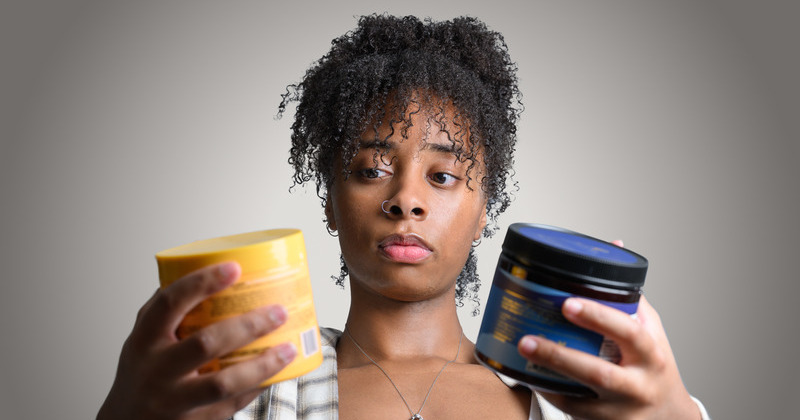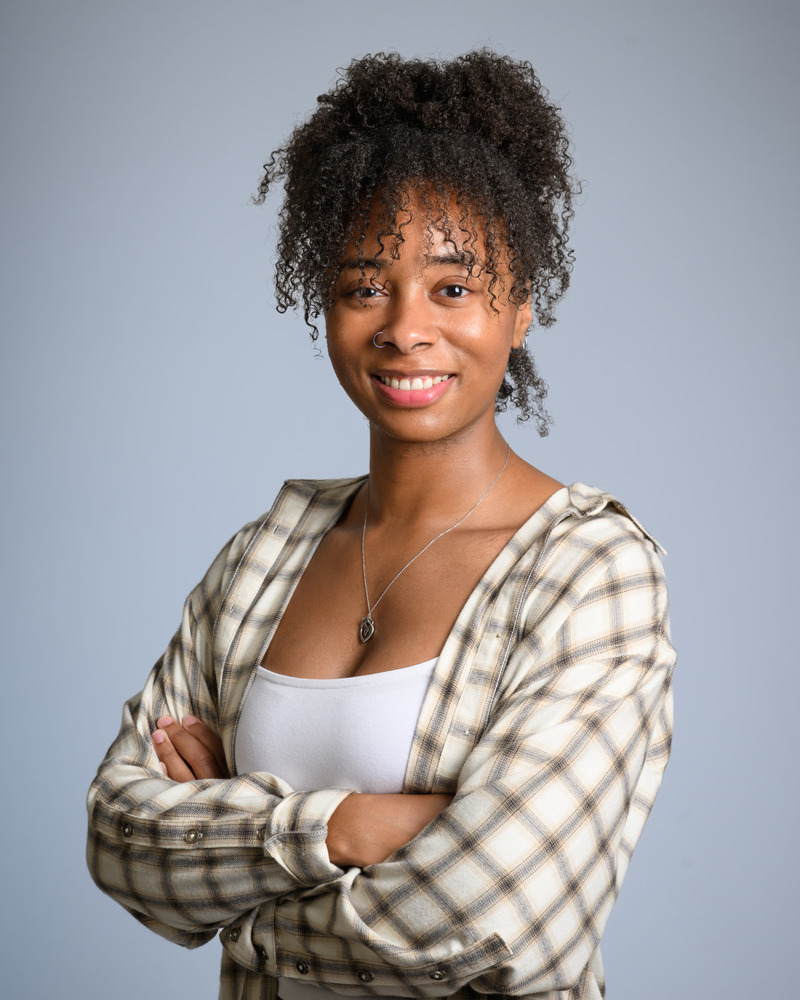


Black women and hair care
Photo by Evan Krape September 03, 2024
UD fine arts student Joycelyn Brown studies the art of natural hair care for Black women
For Black women, the process of maintaining their hair can be fraught. To tame texture or curls, many women spend long hours in a stylist’s chair or subject their hair to harsh chemical relaxers to achieve a smooth, glossy finish. These approaches create other challenges for Black women, including how to safeguard their natural locks from constant prodding and processing—or when, if at all, to wholly embrace their natural hair instead.
This conundrum led Joycelyn Brown, a University of Delaware fine arts and visual communications major from Bear, Delaware, to become curious about the natural hair experiences of Black women. Were they taught at home how to take care of their natural hair? Where did they get information about products or approaches to condition or manage their natural hair? How did they determine whether products or processes were safe to use?
As part of her undergraduate research at UD, Brown surveyed a range of Black women to understand their experience caring for their natural hair. In particular, she wanted to know what attracts them to various haircare products in the store or salon, to inform her approach to visually communicate product safety in the branding of hair care merchandise.
It's a timely topic. Safety in haircare products aimed at Black women recently made headlines when a group of women sued the makers of hair relaxers in federal court over potential health risks related to the items’ use.
Working under the advisement of Katie Leech, assistant professor art and design, Brown spent time in local stores and salons, perusing hair care products to compare and decode how different brands convey their brand identities.
Why did you want to pursue this — what intrigues you about the topic?
Brown: I wanted to pursue this research because natural hair is something I am passionate about. As a Black woman, it is common for our mothers to use relaxers when we are children because it makes the hair easier to work with. With that being said, I was never taught how to properly take care of my hair and had to learn on my own. There is a lot of information in the world about hair products, and not all the messages are made to benefit Black women, which puts us at a disadvantage. Since I love graphic design, I thought it would be interesting to find a way to visually communicate this information using brand design.

Why does research like this matter?
Brown: I would love for young teenage girls who—like me—may not have been taught what is good or bad for their hair to learn how to properly maintain it. As part of my research, I am interviewing a variety of Black women to understand their experiences caring for their natural hair. This will help me gauge how much people know about their hair and what products they are using. For example, in my interviews, I ask questions about hair porosity (i.e., how well someone’s hair retains moisture), the brands and products they like, and what attracts them to those products in the store. Understanding what knowledge consumers have and what hair products they are purchasing, including what chemicals are in the products, can help me better design and communicate messages of femininity, curl health, being a Black woman and advocacy for natural hair.
What is the coolest thing about being involved in this project. Have you had any surprising or especially memorable experiences?
Brown: The coolest thing about being involved in this project is being able to combine my two passions, graphic design and hair care. It allows me to learn more about hair that I did not know and to find ways to visually represent messages about hair care to other people.
Is there anything you’ve discovered about yourself and your career goals as a result of this project?
Brown: I have learned that I love looking at the designs on packaging. I can learn from what makes one design stand out from the rest and consider how I can implement that approach in my designs. All designers think in different ways, so it is admirable to see how they execute their vision. As far as future career aspirations, I am still unsure. I start my visual communications courses in the fall semester, and I think that will guide me to where I want to go after graduation. I am excited to take some design advertising classes because there is much more to design than just Photoshop and Illustrator.
What do you enjoy doing in your spare time?
Brown: In my spare time, I enjoy crocheting, working at a coffee shop, playing video games, hiking, reading and drawing.
Contact Us
Have a UDaily story idea?
Contact us at ocm@udel.edu
Members of the press
Contact us at 302-831-NEWS or visit the Media Relations website

